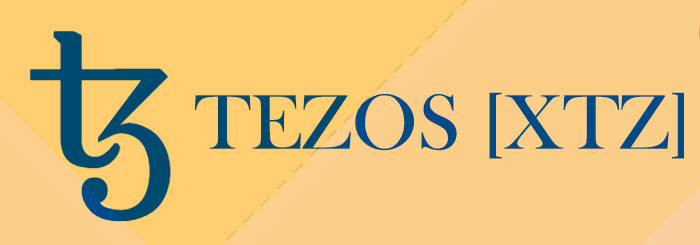When Satoshi Nakamoto introduced the world’s blockchain network Bitcoin in 2008, everyone was amazed by this peer-to-peer electronic cash system. Bitcoins are created as a reward for mining, the process that uses Proof-of-Work (PoW) consensus algorithm. On January 3, 2009, Satoshi Nakamoto mined the first block of the Bitcoin blockchain called the genesis block.
After that day, many individuals and companies established their infrastructure to start mining Bitcoin. But they soon realized that Proof-of-Work (PoW) consensus algorithms to mine new Bitcoins required a high amount of energy.
According to an estimate, at that time, it cost an average of $150,000 a day to maintain the Bitcoin network.
To solve the problem of Bitcoin mining’s high energy consumption, in 2012, Sunny King and Scott Nadal introduced Proof-of-Stake (PoS) consensus algorithm for blockchain to create new coins on a blockchain network. Thus the Staking came into existence.
What is Staking
So, what is staking? Staking is the process of actively participating in transaction validation on a proof-of-stake (PoS) blockchain. Anyone with a minimum-required balance of a specific cryptocurrency can validate transactions and earn rewards for their participation.
In simple words, staking is the process of purchasing and holding a cryptocurrency in a wallet to support the operations of a blockchain network.
Soon after its introduction in 2012, staking became a popular alternative to cryptocurrency mining and trading for those looking to earn profits from crypto mining but without the risk or high input cost.
Staking is considered the easiest way of making money with cryptocurrencies, but what are the best rewarding staking coins in 2020? Let’s take a look at five top coins of 2020.
The ranking is not purely based on annual returns, but also on the risk factor, the complexity of the process, and the liquidity of assets during the staking period.
-
Tezos (XTZ)
Staking Rewards, the leading data provider for staking lists Tezos (XTZ) as the top staking asset although it is not the highest interest-paying coin.
The current annual yield on Tezos is around 6%, minus a validator’s fees. The best feature is that XTZs staked are always liquid. Stakeholders can freely move their tokens as there are no freezing or unbounded periods.
Tezos blockchain uses a Liquid Proof-of-Stake (LPoS) consensus mechanism where, unlike Delegated PoS networks, token holders delegate their whole accounts to a validator called bakers, who will be in charge of securing the network on their behalf.
XTZ holders who do not want to delegate their tokens to a validator can bake on their own by setting up a node and having at least 8.000 XTZ, also called a roll. Bake rewards are also higher than delegation rewards.
With the current yield, an XTZ holder can earn $153.77 in rewards by staking 1,000 XTZ.
-
Cosmos (ATOM)
Cosmos’ ATOM comes second in this list. The current annual yield on Cosmos is around 8 to 10%, minus the validators’ fees.
ATOM holders can stake by delegating their assets to one of the validators of the network. They can also run their validator node. The rewards for running a validator is higher but contains a high-risk factor.
There is also a lockup period of 21 days. During this period, a stakeholder will not earn any rewards, and tokens locked will not be transferable until the period is complete.
-
Algorand (ALGO)
According to Stakingrewards.com, Algorand (ALGO) is 3rd best coin to be staked in 2020. The current annual yield on ALGO is 5.78%. Users can start staking with Algorand with just 1 ALGO.
To stake ALGO, users only need to hold ALGOs in wallets like Exodus and Atomic Wallet. Algorand (ALGO) currently does not offer delegation. Instead, anyone can run a participation node only Algorand. As not all users do not have the technical ability to participate in the consensus protocol, Algorand offers an offline mode. When a user declares himself offline, their account’s stake is not taken into consideration.
-
Decred (DCR)
Decred attempts to yield the best results by using both Proof-of-stake and Proof of Work in an innovative hybrid blockchain. The PoS consensus mechanism is used to validate PoW mining work and approve or reject proposed rule changes to the consensus protocol. Decred holders stake DCR to obtain voting tickets. The DCR block rewards are divided such that POW miners get 60% of the rewards while POS DCR ticket holders get 30%.
Currently, DCR staking annual reward is at 7.42%. The required minimum for staking is 138 DCR. There is also a lock-up period of 28 days.
To learn more about Decred visit this article.
-
Fusion (FSN)
Fusion (FSN) is by far the most interest-yielding asset in the top 5 list. The current annual yield on FSN is 23.55%. FSN holder can delegate their token to a staking provider pool. All they need is to send a minimum of 100 time-locked FSN to the pool and they will do the rest. They can start earning in minutes while improving the security of the Fusion network at the same time.
If an FSN holder has more than 5,000 FSN, he can run his own node. Setting up a node is easy but requires some technical knowledge to operate it.
This article is not investment advice from the author. Investment in cryptocurrencies is risky. Do it on your assessment.












